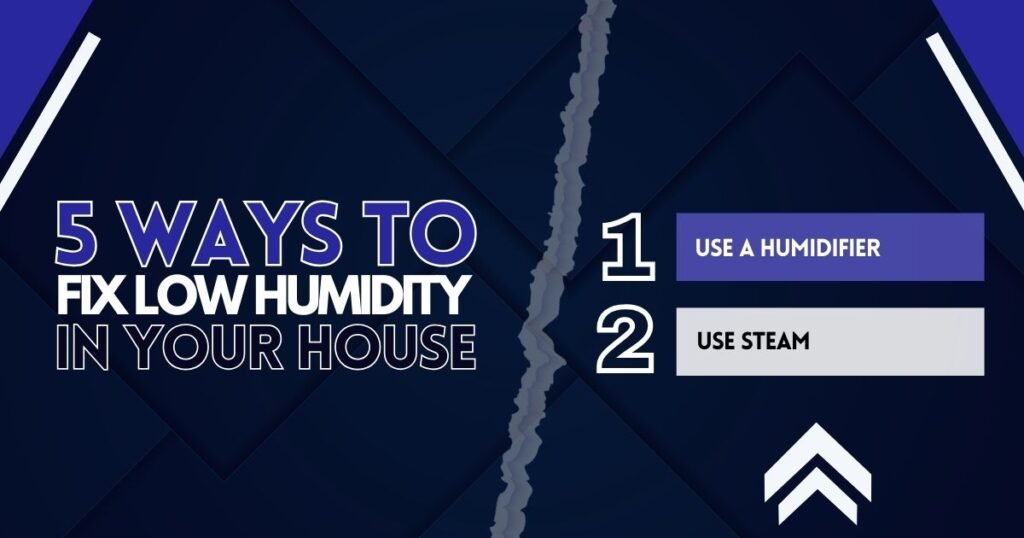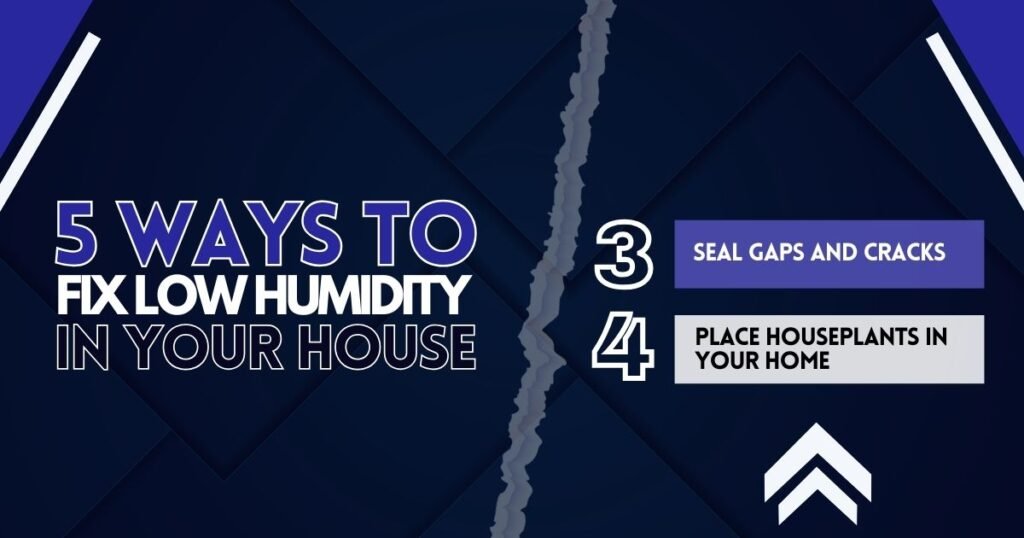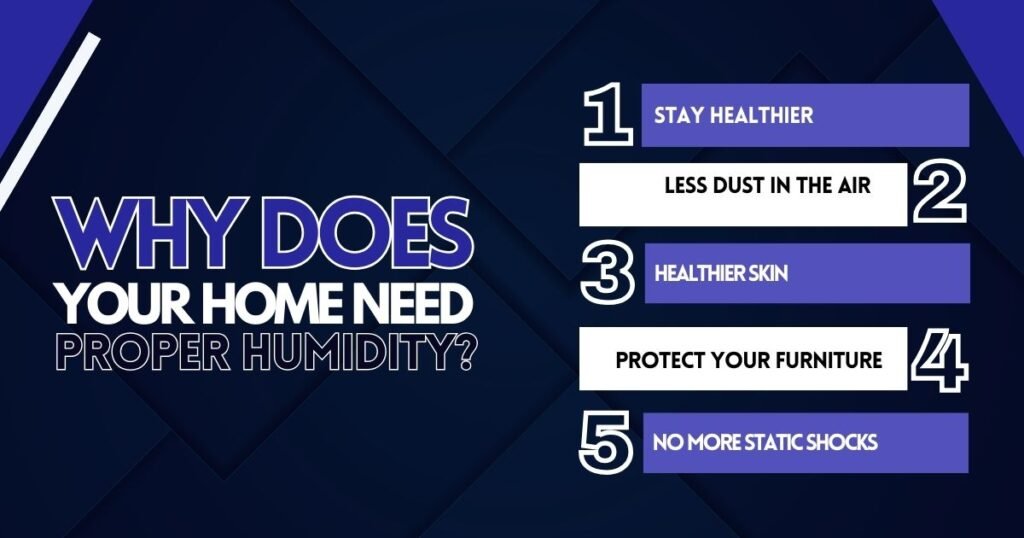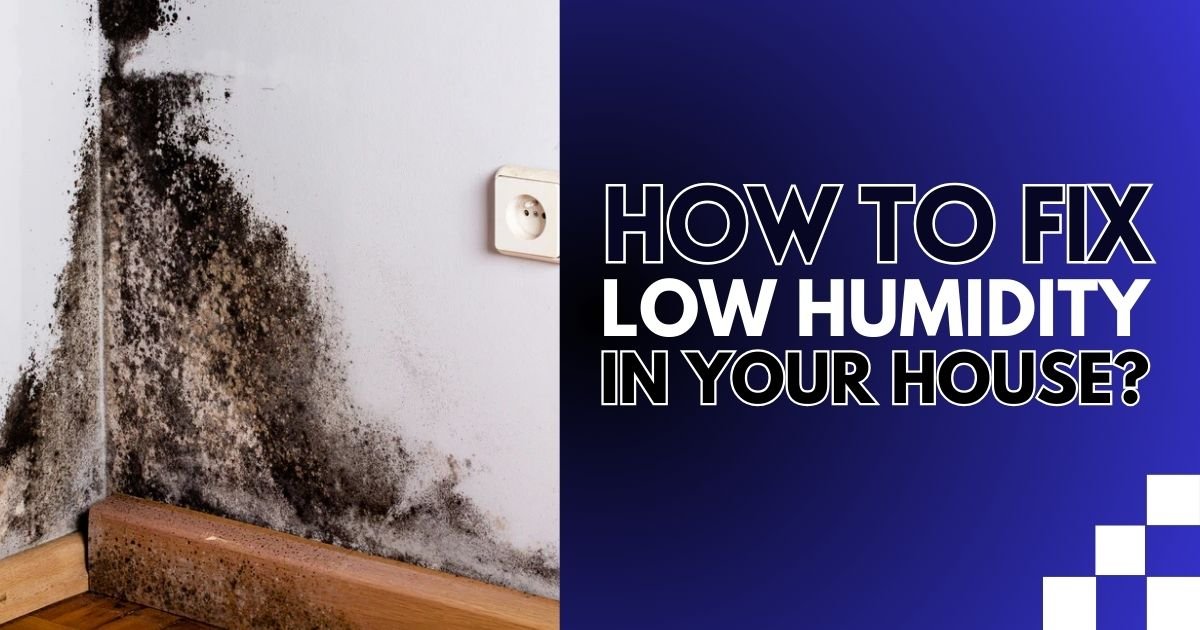Dry air can quickly turn your home into an uncomfortable space, often in subtle ways. You might notice itchy skin, static shocks from your favorite sweater, or even a dry throat when you wake up in the morning. Over time, low humidity can lead to more noticeable issues like cracks in wooden furniture or floors, peeling wallpaper, and indoor plants struggling to thrive.
Low humidity isn’t just an inconvenience—it can affect your health, your home, and even your mood. There are practical ways to address this issue and bring balance back to your living environment. Before considering solutions, think about this: how is dry air affecting your comfort and the things you cherish at home?
Common Signs and Causes of Low Humidity
The signs of low humidity in home are not the same as signs of mold in a house. If the air in your home is too dry, you might notice dry skin, chapped lips, or a scratchy nose and throat. You could also get static electricity shocks more often. Wooden furniture or floors might crack, warp, or have gaps, and wallpaper may start to peel.
Knowing what causes low humidity in house can help address the problem. Low humidity often happens during winter. When you heat your home, the warm air can dry out the moisture. Homes with poor insulation are more likely to have this issue.
5 Ways to Fix Low Humidity in your House
Fixing low humidity levels in your home doesn’t have to be expensive or complicated. You can try simple tricks that cost nothing or choose a long-term fix that might need a bit of spending.

1. Use a Humidifier
A humidifier adds moisture to the air, helping you reach a comfortable humidity level. Options include cool mist, warm mist, and ultrasonic humidifiers. When picking one, think about the room size, how easy it is to clean, and how noisy it might be.
For a more permanent option, whole-house humidifiers connect to your HVAC system and keep the humidity balanced throughout your home. Remember to clean your humidifier often to stop mold and bacteria, and refill it with fresh water when needed.
2. Use Steam
Steam from everyday activities can add moisture to the air naturally. For example, when taking a hot shower, leave the bathroom door open to let the steam move into nearby rooms. This simple step not only increases humidity but also helps stop the bathroom from getting too damp.
You can also boil water on the stove to create steam that spreads through your kitchen and nearby spaces. For extra effect, add a pot of simmering water with herbs or citrus slices to freshen the air while adding moisture. Remember, steam works best in closed or semi-enclosed spaces, so try to keep windows and doors closed where possible.

3. Seal Gaps and Cracks
Dry air often gets inside through small openings around windows, doors, and walls. Check for gaps or cracks in these areas, especially around older fittings, and seal them with caulk or foam sealants. This not only keeps the humidity levels stable but also saves energy by stopping drafts.
For windows and doors that are too old or damaged to repair, upgrading to energy-efficient models can make a big difference. Weatherstripping around doors and windows is another simple and cost-effective fix to keep dry air out. Pay extra attention to areas like the attic or basement, where drafts are often unnoticed but can significantly impact indoor humidity.
4. Place Houseplants in Your Home
Houseplants are a natural way to add humidity to your home. They release water vapor into the air through a process called transpiration. For the best results, place plants in the rooms where the air feels the driest.
Good options include ferns, peace lilies, and spider plants, as they are known to boost indoor moisture levels. Make sure to water your plants regularly and keep them healthy, as dry or wilting plants won’t help much. Adding a few plants around your home not only improves humidity but also makes your space feel more inviting and improves air quality.
5. Set Out Bowls of Water
Using bowls of water near heat sources is an easy way to increase humidity in your home. Place the bowls near radiators, heaters, or sunny windows. The heat will slowly cause the water to evaporate, adding moisture to the air.
This method works best when you clean and refill the bowls every couple of days to prevent mold or bacteria. Be mindful of where you put the bowls—avoid high-traffic areas or spots where kids or pets might knock them over. While it’s a simple and cost-free option, it may not be the safest choice for households with little ones or pets.
Why Does Your Home Need Proper Humidity?

Keeping your home’s humidity at the right level offers plenty of benefits. The ideal humidity level for a home is around 45%. If it drops below 30%, the air becomes too dry, while levels above 50% can feel too sticky. Maintaining the right balance can make your home cleaner, healthier, and more comfortable.
Here are some benefits of proper humidity during winter:
- Stay Healthier: Dry air helps spread viruses like the flu and colds more easily. Proper humidity reduces the risk of sore throats, headaches, and discomfort with contact lenses.
- Less Dust in the Air: Balanced humidity keeps dust and allergens under control, making the air easier to breathe.
- Healthier Skin: Say goodbye to dry, itchy skin by keeping the air moist enough to stay comfortable.
- Protect Your Furniture: Dry air can cause wood furniture, floors, and even pianos to crack or warp. Proper humidity helps preserve them.
- No More Static Shocks: Those annoying shocks from touching surfaces in the winter? Proper humidity takes care of that too.
If you want a home that feels better all year round, keeping the humidity balanced is a great place to start.
Don’t Let Dry Air Steal Your Comfort
We’ve all experienced those little annoyances that come with dry air—itchy skin, stuffy noses, or static shocks. It’s easy to ignore at first, but over time, low humidity can take a bigger toll on your comfort and your home. Fixing it isn’t just about feeling better in the moment; it’s about creating a space where you can truly relax, stay healthy, and protect the things you care about.
Don’t let dry air affect your health or your space any longer. Vegas Plumbing Pros offers expert solutions to restore the perfect humidity in your home. Call us now and let our team help you create a healthier, more comfortable living environment.
FAQs
What causes low humidity in a house?
Cold air holds less moisture than warm air. When it enters your home and gets heated, the air becomes even drier, leading to low humidity in home environments. This can also happen in dry climates during summer, as air conditioners remove moisture from the air while cooling it.
What happens if humidity is very low?
Low humidity can cause dry or itchy eyes, dry skin, and make infections spread faster. It can also harm your home. Wood needs some moisture to stay in good shape, but when the air is too dry, it loses water and starts to shrink.
Does AC reduce humidity?
Air conditioners lower the humidity in your home as they cool the air. The refrigerant moves through the evaporator coils, making them cold enough to remove moisture from the air. When warm air from your home passes over these coils, the moisture in the air condenses into water droplets, which are then drained away.
Is it bad to live in low humidity?
Dry air makes it easier to catch viruses like the cold or flu, as they can live longer in cool, dry conditions. Low humidity in house symptoms, such as nasal irritation, dry skin, or worsening eczema, can make you feel uncomfortable and more prone to illness.



